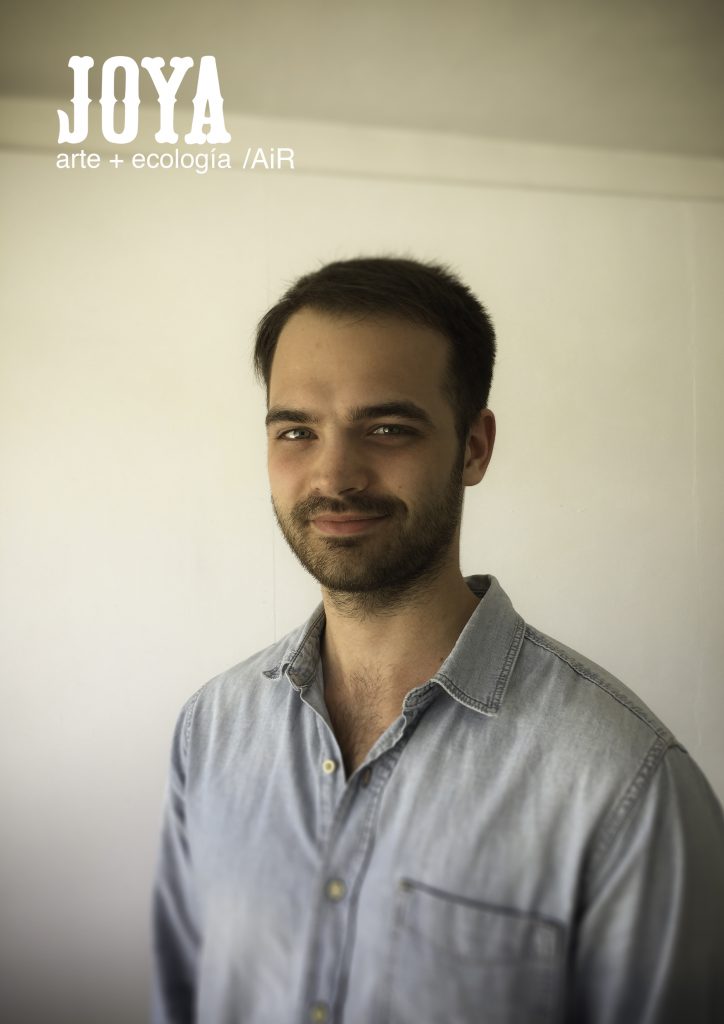The Call of Nature
My residency, hosted by Joya: arte + ecología in the Parque Natural Sierra María-Los Vélez in Almeria, Spain, was not the anticipated escape and period of artistic concentration that I expected. It was full of distraction. The landscape intruded on everything I did, bearing through the windows at every turn and enticing me away from artwork and out of the house.
The residence is in a remote location, but it is not devoid of signs of life, however distant they might be. It is rural but not primal. Every aspect of the house and landscape has been cultivated by humans. It is cultured. The almond trees, Aleppo pines, firebreaks, derelict buildings, stray cats, rabbit droppings, unused wells are all results and residues of human action.
The connection between the renovated farmhouse building of Joya (the Cortijada Los Gázquez) and the landscape it is sited within is very direct. Everyday human activity (showering, preparing food/drink, boiling the kettle, going to the toilet, brushing teeth, washing clothes and utensils, painting etc) is loaded as the organisation strives to be a sustainable ‘off-grid’ self-reliant machine. Every basic and greedy need I had (to clean, to drink, to be warm, to eat, to dispose of waste) effected and relied upon the energy systems of the house and therefore the environment I was within. Every time I made a cup of coffee I was boiling with guilt as I used crucial energy and water. Every shower I took was a battle with my conscience. It was also a delightful feeling of wrongdoing.
I keep myself very well hydrated. Basically I drink a lot. I like running in the mornings which involves refreshment afterwards. I love a hot drink. All this liquid is exactly what is scarce in this eroded, arid and bleached land.
The landscape is parched, barren and very thirsty due to the effects of decades of human land use, climate change and land abandonment. Water systems designed to store and capture rainfall and irrigate crops no longer work. The land crumbles underneath your feet. I caused a mini landslide when stumbling down a hillside. The loose stones were dropping off the mountain face like icing sugar blown from a cake.
Distracted from painting, I went for daily walks after a few cups of tea. At some point during the walk the ‘call of nature’ would summon. Being in such a quiet place where you could walk for hours and not see a soul, I happily relieved myself openly on the chalky dry soil. This natural compost, or ‘Humanure’ as Jenkins calls it is very eco-friendly and I felt pleased to finally do my bit for the planet and save flushing the toilet. This action of carrying the precious liquid inside me from the house and releasing it into the landscape became a poignant ‘act’ as I was guest/pest to the host organisation. I was in affect transporting their water into the landscape. This ‘release’ was symbolic, but also a ‘waste.’
The only painting it felt fitting to do whilst in this fascinating location and yet equally perverse, was painting that was dependent upon using water; watercolour. I brush-placed globules of watercolour onto paper that slowly seeped into its ground, this gradual absorption mirroring the process of rainfall soaking the soil, turning from half-sphere 3D paint to fully immersed into the paper flesh when dried. I also brush-dropped watercolour onto paper, turning these circular splatters into shapes that resembled the Aleppo pines outside and architectural and landscape design tree drawing templates.
Rachel Magdeburg 2016









